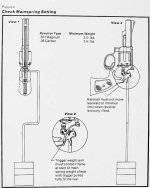Shoebox1.1
Member
- Joined
- Apr 1, 2023
- Messages
- 311
- Reaction score
- 701
So I'm wanting to know what my 686 is pulling at and am looking at digital pull gauges from wheeler and Lyman. Looks like they max out at 12lbs. What if you have a Ruger or something that's 14.00? You'd never know what it is! What is your brand you use? And what's a reliable ignition number I should strive for on my 4 inch 686 no dash? 10lbs? Thank you

